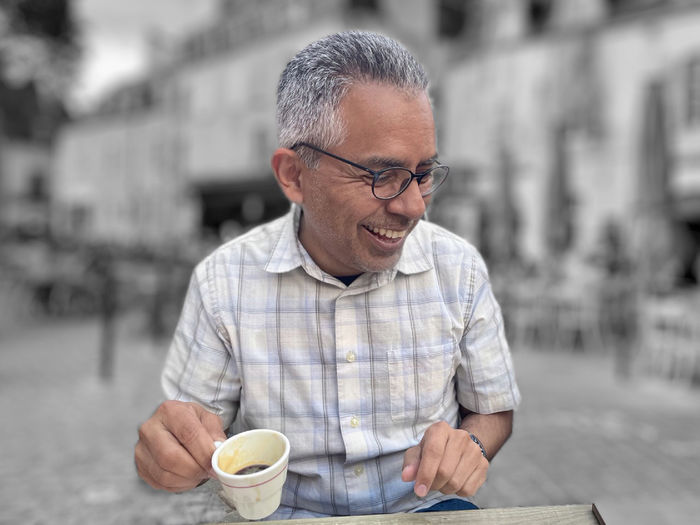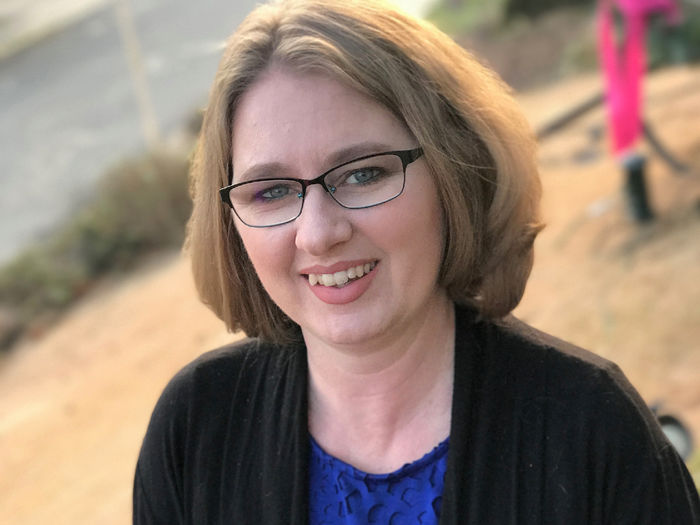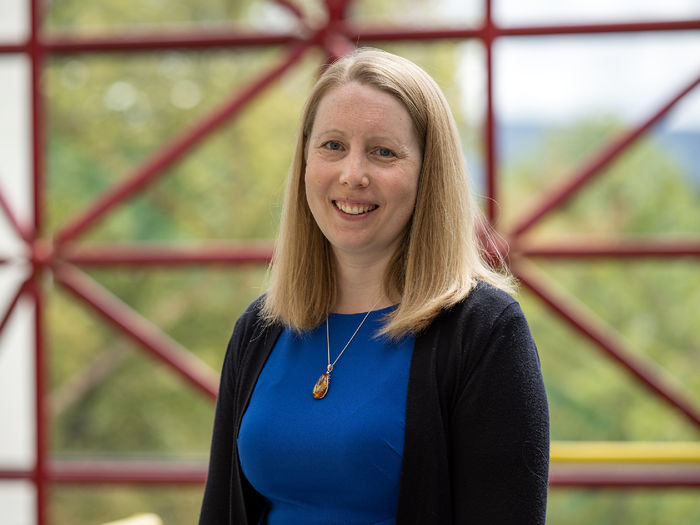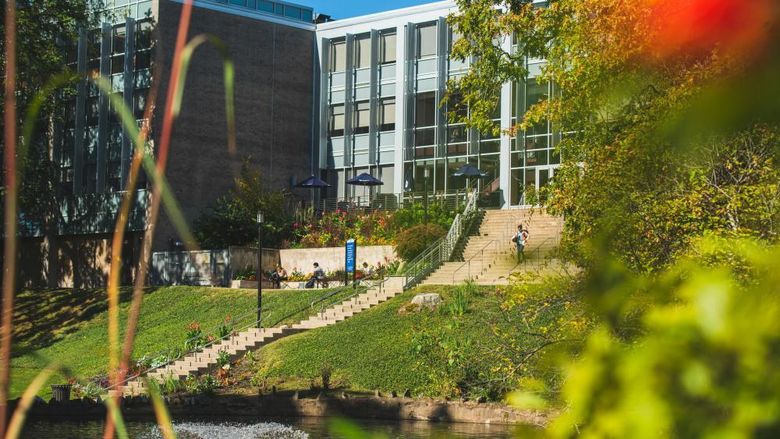UNIVERSITY PARK, Pa. — Juan Gil, professor of mathematics at Penn State Altoona; Sonia Molloy, associate professor of human development and family studies (HDFS) at Penn State York; and Jacqueline O’Connor, professor of mechanical engineering in the College of Engineering, have received the Alumni/Student Award for Excellence in Teaching and have been named 2024 Penn State Teaching Fellows.
The Penn State Alumni Association, in conjunction with undergraduate and graduate governing bodies, established the award in 1988. It honors distinguished teaching and provides encouragement and incentive for excellence in teaching. Recipients are expected to share their talents and expertise with others throughout the University during the year following the award presentation.
Juan Gil
After more than 20 years of teaching, Gil said he sees similarities in teaching, research and life. Just like in math, difficult problems are rewarding when solved.
“In essence, I believe in honesty, transparency, hard work and respect,” Gil said. “I approach life as a mathematician, and I see every day and every class as a puzzle that requires a solution. Every puzzle is different and may need a different approach each time, but at the end, it is always rewarding when it gets solved.”
Gil begins each course by telling his students math is a language and must be learned through speaking it. He tells them English isn’t his first language — just like math isn’t theirs — but together they’ll learn to become more fluent.
He said teaching students to be fluent in math requires commitment in the classroom and availability outside of it.
“I make sure to emphasize that their success is a function of their efforts, but I understand that it also depends on my ability to keep them engaged and motivated to do the work,” Gil said.
Communication and collaboration are key to advancing students, Gil said. He sees students at all levels — from those who excel at math with ease to those who are struggling — and his role is to meet all students where they are and advance them forward. He teaches everything from math for future elementary school teachers to upper-level courses.
“For all of them there is a path to success, and I see it as my mission to find that path,” Gil said.
Gil also is a math researcher and involves students in the process. He said he once bought into the myth that it was difficult to involve undergraduate students in math research. He’s now convinced that determination, creativity and the right resources are all that’s needed to create research opportunities that are life-changing for students and rewarding for faculty members.
“In the last seven years, I have worked on research projects with a diverse group of students. Collaborating with me, students are actively involved in the creative process of doing mathematics,” Gil said. “They learn the meaning of perseverance and have the chance to improve their problem-solving and writing skills. I help them with the dissemination of new results, and I encourage their participation in research fairs, seminars and conferences. While not every collaboration evolves into a prolific one, every journey has the potential to significantly change the way students remember their college years.”
Students praised Gil’s humor, dedication and ability to always be there when they needed him. They also said he’s someone who’s interested in their well-being in and out of the classroom. He’s someone they can rely on for career and personal advice as well as math and research.
“Through his passion for the beautifully complex world of mathematics, he teaches students not only how to do math but to understand where it comes from and how to apply it,” a former student said. “He is genuine in his devotion to math and caring for his students. He balances work and time for his classes, his own research, and his family and friends. I believe that recognizing Dr. Gil’s diligent work academically and personally would be meaningful and well deserved.”
Sonia Molloy
Molloy said each of her students has the potential to learn and grow, but at unique levels. That’s why the one-size-fits-all approach doesn’t work in higher education.
“Each student has a fire within them, and my mission is to foster and guide that fire. For some students, this fire is an intense flame, so I work to feed the flame, encouraging it to take new heights and directions,” Molloy said. “For other students, this flame is a tiny simmering ember that needs time, nurturing and resources to continue to burn and spark into a flame. I integrate theories to guide my teaching to reach this goal of sparking learning and growth in every one of my students: sociocultural theory, humanistic perspective and intersectionality.”
Molloy relies on two concepts she learned from sociocultural theory. First, she finds the zone between what students already know and what they can learn through her efforts. She finds this zone through informal and formal ways. Arriving early to class and chatting with students about themselves and assignments is one way. She said the interactions help build trust and rapport with students. Formally, she finds this zone through lectures, assignments and applied activities.
Second, she provides scaffolding, or the necessary tools to support learning through the zone. She designs her courses so that students have a multitude of ways to learn core course concepts, through tools such as books, scholarly research, peers, one-on-one instruction and real-life situations.
“I use two theories to inform my teaching within the humanistic perspective: hierarchy of needs and free will,” Molloy said. “To extend toward self-actualization, students must have each hierarchy of needs met within the pyramid, including basic needs, safety, belonging and esteem. I partner with our resources such as campus police, success center, student affairs and clubs to bring these services into classes through visits, assignments and informal referrals. I sometimes offer to walk a student to the resource and start an engagement with the service.”
Many of Molloy’s students are first-generation students and her goal is to activate the free will that allows them to succeed and grow. She acknowledges many of her students face challenges and barriers but have a desire to overcome them. Through building relationships with those students, Molloy said, she’s able to help them overcome those barriers and create a path to success.
Molloy said intersectionality — the concept that every person has multiple identities that intersect and diverse contexts that contribute to experiences of marginalization and privilege — guides the design and delivery of her courses. Her students might have a range of identities, some visible and some not, so she’s careful to be respectful of those differences.
These efforts help Molloy achieve her ultimate goal: watching them succeed.
“My teaching philosophy integrates theories and the passion to see my students thrive,” Molloy said. “I achieve this in classroom teaching, mentoring, advising and service. My greatest joy every semester is watching our students cross that stage to get their diplomas, ready to make a change in the world and their lives.”
Former students said Molloy’s personability, kindness and expertise make her a great educator. They said she’s committed to her students’ success.
“Dr. Molloy’s teaching excellence is further exemplified by her innovative and inclusive practices,” a former student said. “She incorporates a variety of teaching tools and strategies, catering to diverse learning styles. Her use of real-world examples and case studies in the HDFS field enriches the learning experience, demonstrating the practical applications of academic knowledge.”
Jacqueline O’Connor
O’Connor said her teaching philosophy has two goals: “Create a learning environment that encourages a diverse spectrum of students to become skillful scholars and provide students with meaningful educational experiences that train them to be high-impact engineers.”
To accomplish this, she relies on evidence-based strategies that are built on proven teaching and learning techniques. Part of her research delves into engineering education, so she’s up to date on methods that achieve the most success. Two current research projects of hers — both funded by seed grants from the Leonhard Center and the Schreyer Institute — have helped her fine tune those teaching goals and have improved her teaching outcomes, she said.
Engineering education research has given her a solid foundation in best practices while allowing her to chart her own path, developing new practices that improve her teaching and student outcomes.
“While I am a teacher first, the research lens has taken my educational innovation to the next level and supported my two teaching goals,” O’Connor said.
To create a learning environment that caters to a diverse group of learners, O’Connor starts by teaching the core material in a clear and engaging way through in-class assignments and homework that enhances what’s learned in class. The work is supported by readings, videos and quizzes.
After that, O’Connor pushes her students to apply what they’ve learned to higher-level concepts to help solve more complex engineering problems.
She and her research partner, Associate Research Professor Andrea Gregg, developed a model for improving conceptual learning called active learning and metacognition (ALM), which outlines a process by which students learn, use and reflect on concepts. To implement ALM, O’Connor creates structured activities and reflections that prompt students to not just think about the concepts, but to understand how those concepts can be used to address engineering challenges.
“These reflections are then used as the basis for further activities, allowing students to use their reflective practices to improve their problem-solving skills and develop deeper understanding of the material,” O’Connor said. “This methodology helps support learners from a wide variety of backgrounds to erase the ‘hidden curriculum’ of college and provide them skills in an up-front and supportive manner that will help them throughout college and their career ahead.”
O’Connor’s second goal — creating meaningful experiences that will make her students better engineers — is achieved through incorporating examples, case studies, real-life data, and enlisting the help of practicing engineers from relevant industries to bridge the gap between what they’re learning in the classroom to what they’ll do in their careers.
“This approach prepares students to be highly effective engineers after they graduate because they not only know the fundamentals but have seen those fundamentals applied in real-life contexts,” O’Connor said. “By putting together a solid understanding of the fundamentals, better metacognitive and problem-solving skills, and a broader appreciation of engineering contexts, students in my courses receive a high-impact engineering education.”
Former students said O’Connor is a passionate and effective educator with creative tools for learning. They said she offers a bridge between class discussions to what’s expected of them in the industry. They said, from the start, she is preparing them for futures in the field.
“Dr. O’Connor’s teaching has had a powerful influence in my professional life since the conclusion of my thermodynamics course. This past summer I had an internship with Constellation Energy at a nuclear power plant. The knowledge that I gained under Dr. O’Connor’s guidance greatly improved my ability to understand the thermodynamic cycle of the plant,” a former student said. “This led to me becoming a valued intern as I was put on more difficult projects than my peers. I am immensely grateful for the opportunity to study under Dr. O’Connor because of her passion for teaching, her personal commitment and her lasting impact.”








